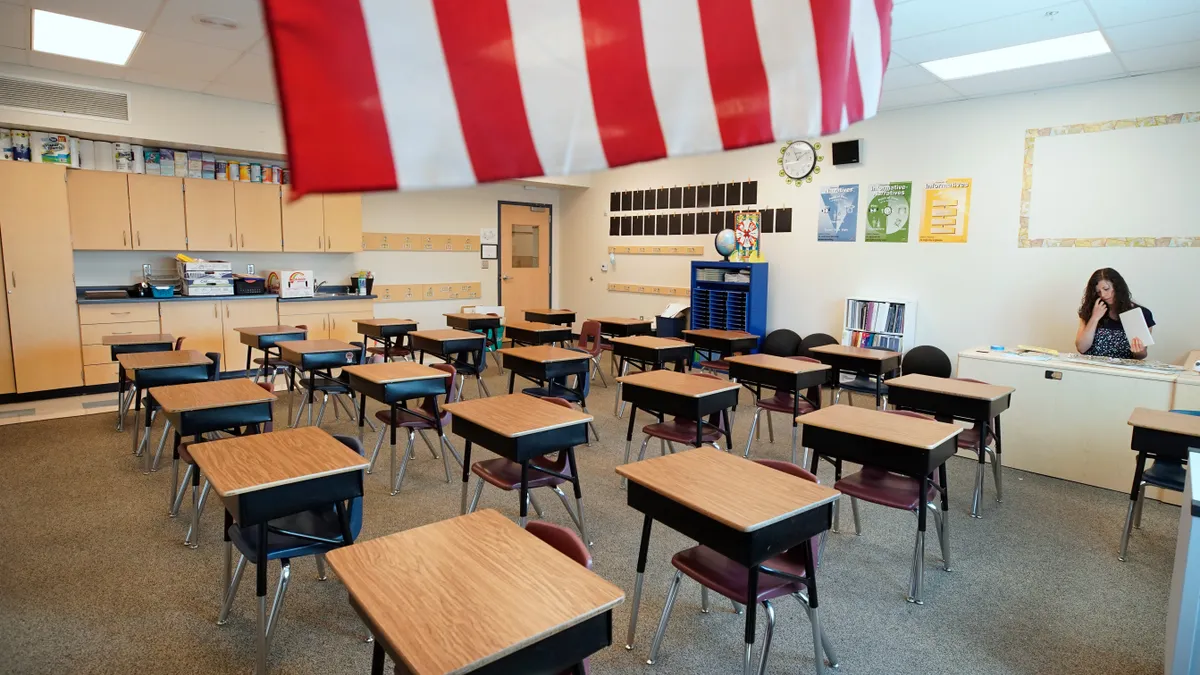Dive Brief:
-
In an effort to gather district and school-level data about the pandemic’s impact on equitable public school experiences, the U.S. Department of Education will hold back-to-back school year Civil Rights Data Collections from 2020-21 and 2021-22, the department announced Friday. It is the first time the department will require this reporting for two years in a row.
-
In a letter to superintendents, Suzanne Goldberg, acting assistant secretary for Civil Rights at the Department of Education, wrote that because of COVID-19’s toll on the education system and federal relief funding allocations to states and districts, the 2020-21 collection is “all the more important.”
-
While local school district leaders say the civil rights data is valuable, they have concerns about their capacities to adequately gather and report all the required data elements while simultaneously addressing the academic, mental health and safety needs of students during the pandemic, said Sasha Pudelski, director of advocacy for AASA, The School Superintendents Association.
Dive Insight:
Districts typically report their CRDC information on a biennial basis but the collection for the 2019-20 school year was postponed. The data includes a variety of information about each school and district, such as enrollment, student demographics, academic offerings, discipline practices and school expenditures. The department has additional reporting requirements for the Every Student Succeeds Act, Individuals with Disabilities Education Act, and other programs, but the CRDC is specifically purposed to examine access and barriers in educational opportunities.
The Department of Education’s Office for Civil Rights uses CRDC self-reported data from public school districts as it investigates complaints alleging discrimination, determines whether the federal civil rights laws it enforces have been violated, initiates proactive compliance reviews to focus on civil rights compliance problems, and provides policy guidance and technical assistance to educational institutions, parents, students and others.
“Without timely and robust data about students’ educational experiences, we cannot begin to understand and then address the impact that the pandemic has had — and continues to have — on student learning and success,” said U.S. Secretary of Education Miguel Cardona in a statement Friday.
Chiefs for Change, a bipartisan network of state and local education leaders, said it supports the information collection because it provides information that can help ensure schools are upholding civil rights protections for all students. The data can also provide insights into equitable funding distributions.
“This fiscal accountability is always important, but it is especially imperative now given the unprecedented amount of federal aid for K-12 education,” said Mike Magee, CEO for Chiefs for Change, in an email.
AASA also realizes the benefits to the CRDC data, particularly in reviewing potential inequities that have occurred during the pandemic, said Pudelski, adding that the effort to collect and report all the required data elements can put a large burden on school districts, especially smaller, rural districts with fewer staff members.
“There's a sense of understanding as to why the department wants to be able to have the parallel [of data collection] but I know our superintendents will be quite upset by this announcement,” she said.
There are about 100 data cells that need to be filled in at the district level for the CRDC and about 1,650 data cells at the school level, according to a 2018 report from the National Forum on Education Statistics.
The variety of data being requested can also be a challenge because the information may need to be pulled from multiple sources. Additionally, the definitions of the required data may differ from what the district or school already collects, the report said.
Some state education agencies help districts with CRDC reporting by pre-populating many of the data cells, but most local districts don’t receive state support, the report said.






 Dive Awards
Dive Awards






